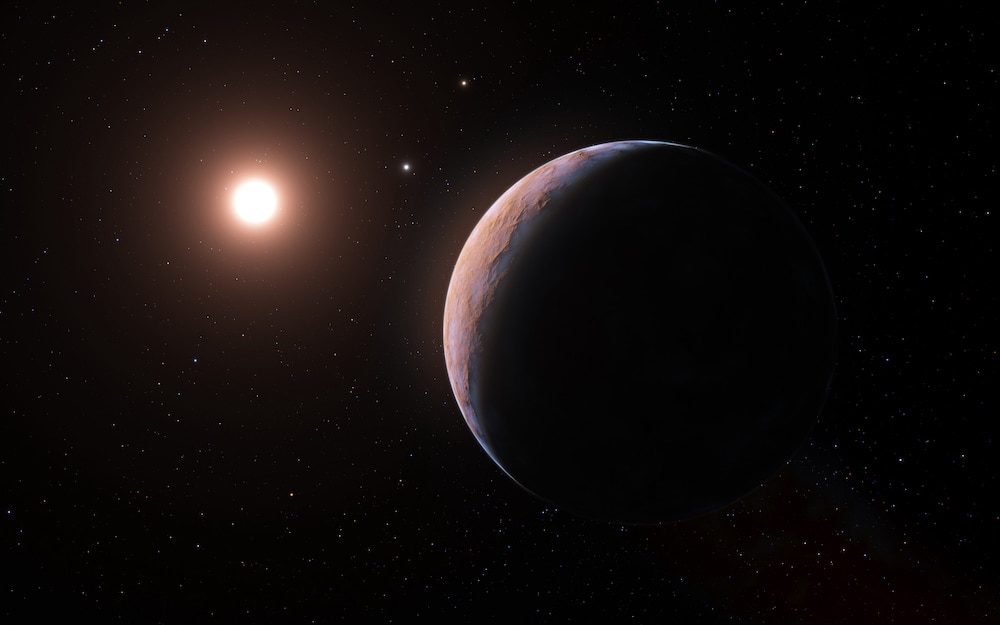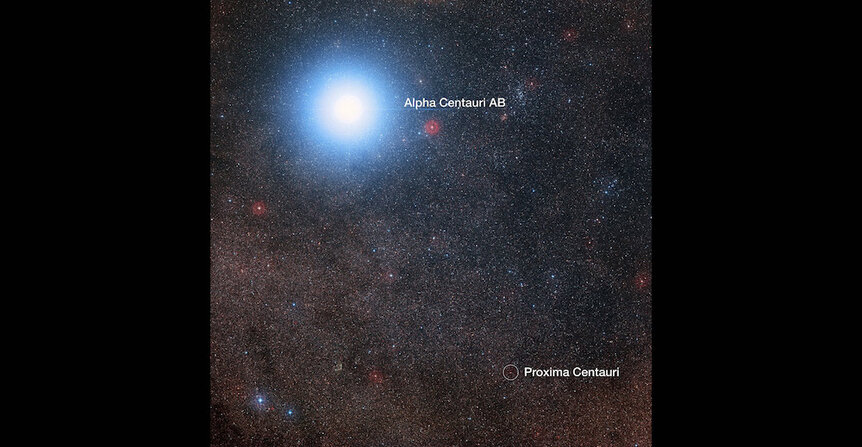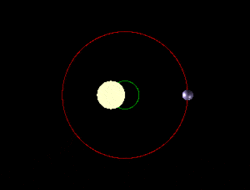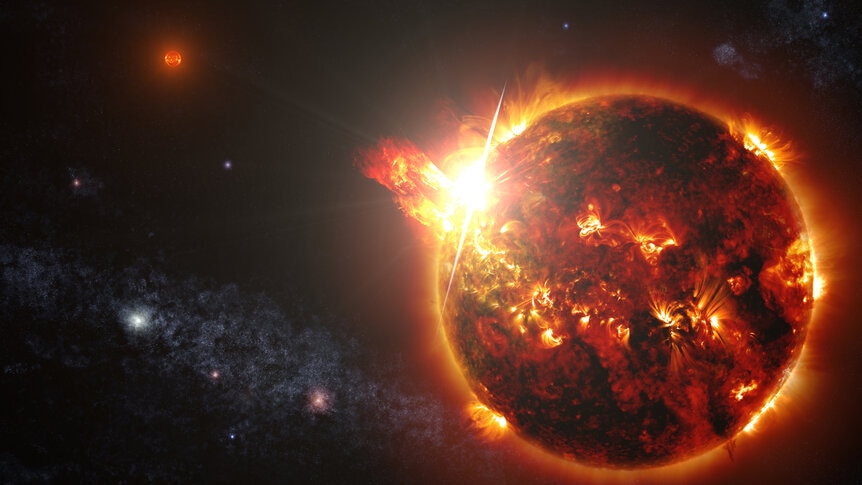Create a free profile to get unlimited access to exclusive videos, sweepstakes, and more!
A third possible planet for Proxima Centauri, the closest star to the Sun!
New planet would be small and hot.

At just over four light years distant, Proxima Centauri is the closest star to the Sun in the entire Universe. We know it has one planet, called Proxima b, and there's decent evidence of a second, called Proxima c.
A team of astronomers has announced there might be a third planet, now too! If confirmed it will be called Proxima d, and would be one of the smallest and lowest-mass exoplanets ever found.
Yeah, this may be a big deal.
Proxima, as the star is usually called, is a red dwarf about 1/7th the diameter of the Sun — not much bigger than Jupiter, really — and about 1/8th its mass. It's very dim, shining with only 1/20,000th of the Sun's luminosity in visible light. Despite being the closest star to our solar system you need a decent telescope to see it at all. It wasn't even discovered until 1915.
It orbits the binary star Alpha Centauri, which is composed of two stars more like the Sun. Proxima's orbit is huge, about a tenth of light year out from the binary, and takes over a half million years to go around them once.
In 2016, the first planet was found orbiting Proxima. It's a bit bigger than Earth and orbits the red dwarf every 11 days or so. Because Proxima is so faint, the planet receives nearly as much energy from the star as Earth does, despite being only about 7 million kilometers from it — Earth is 150 million km from the Sun, for comparison.
A second planet may orbit Proxima, announced in 2019. The evidence for it is good, but just shy of being enough to call it confirmed, although there is some independent evidence for it as well.
[Note this video talks about the third planet as if it's confirmed, but as yet it is not.]
While looking at data for the second planet, there was some evidence of a third, so the astronomers followed up with more observations (link to paper). The planet is much too faint to see against the glare of the star, so it's not detected directly. Instead, they're using what's called the radial or reflex velocity method — conveniently both give the abbreviation RV method. The gravity of the star causes the planet to orbit it, but a planet has gravity to, so really they both orbit their mutual center of mass, called the barycenter, the planet making a wide path around it and the star a much smaller one.
As it orbits, half the time the star is headed toward us and the other half it's headed away. We then see a Doppler shift, a blue and red shift, respectively, as the star moves. We call the motion toward or away from us radial, and the cause of this is a reflex from the planet's motion, so that's where the name comes from. Also, the more massive the planet and the smaller the orbit, the bigger that motion of the star is, and the easier it is to detect.
The astronomers observed Proxima with the Very Large Telescope using a camera called ESPRESSO — the Echelle SPectrograph for Rocky Exoplanets and Stable Spectroscopic Observations — which is a very fancy and precise kind of spectrograph, an instrument that breaks up the light from a star into thousands of extremely narrow individual colors to look for the Doppler shift. As features in the star's spectrum shift back and forth, the velocity of the star can be found.
In this case that motion is extremely small, and extremely difficult to measure. Still, they found a signal indicating periodic motion that cycles every 5.12 days. The magnitude of the motion is incredibly small: Just 39 centimeters per second. That's slower than average walking speed! But if correct that's the orbital velocity of the star moving around the barycenter. That implies the planet has a mass of about ¼ of Earth's — roughly twice that of Mars — and has a period (it's "year") of 5.12 Earth days. Only a handful of smaller planets orbiting others stars have been found so far. L98-59b has only 40% of Earth's mass, and Kepler-37b is only a bit bigger than the Moon! These records will no doubt be broken as time goes on.
The orbit of Proxima d would be fairly circular, and that means it must be just over 4 million kilometers from the star. That's close, less than a tenth of the distance of Mercury from the Sun. But Proxima is so faint the planet wouldn't be as hot as our innermost world, though still hovering near the boiling point of water. Given the usual mix of materials small planets are made of — rock and metals — it's likely to be about 80% Earth's diameter.
Now mind you, this is all if the planet exists. The astronomers used two different ways to analyze the observations and I have to say they look pretty good — planet b shows up in their data really well — but Proxima is a weird star. It's highly variable, blasting out flares and likely has lots of starspots (like sunspots on another star) on it. That can make measuring its velocity very tricky indeed. The team has clearly analyzed the data carefully and the signal is good, but astronomers are a cautious lot. We'll want to see some independent data before we declare this planet to be real.
They found there's a 2% chance the planet could transit the star, passing directly in front of it. That makes a mini-eclipse, and the light we see from the star would dim. Nothing has been seen like that yet despite years of observations, so it seems unlikely the planet does transit. Too bad; it would not only confirm the planet but also gives us its size.
I'll note that while the exoplanet Proxima b has been confirmed and accepted in the official NASA database of alien worlds, Proxima c has not. This makes me wonder what would happen if this new one is confirmed first. Then it will be Proxima c, and the one not-quite-confirmed-yet will have to wait, and become Proxima d.
Confusing. But then discovery on the bleeding edge of what we can do is commonly messy. It's not like in the movies when some attractive person in a white labcoat leans back from staring in the eyepiece and mutters, "I have to tell the others!" Discoveries are more like slight wiggles in a graph with lots of noise and uncertainties, and has to wait for more or more sensitive observations before someone yells, "Eureka!"*
One of the most important qualities you need as a scientist is patience. And a sense of irony: We've discovered confirmed planets around stars dozens, hundreds, and even thousands of light years away. But right next door?
Patience.
*Note: No one yells that, either.





























